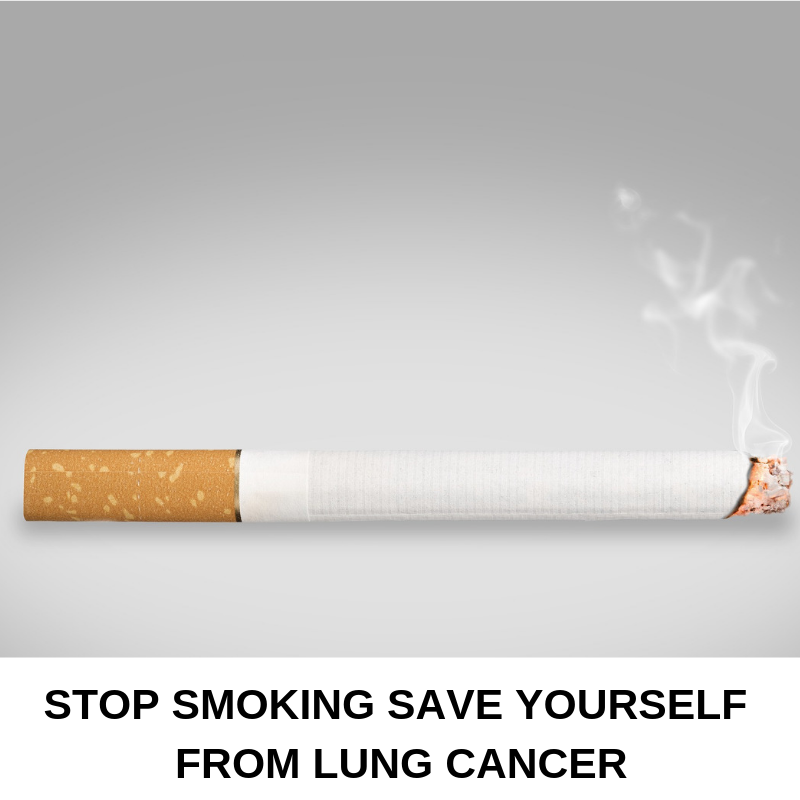
LUNG CANCER
Cancer is an infection in which cells of the body grow disorderly. When cancer begins in lungs, is called lung cancer. It is also known as lung carcinoma which starts in lungs and may spread to lymph nodes or other organs in the body, such as the brain. Cancer from other body parts may also spread to the lungs. When cancer cells spread from one part of the body to another, called as metastases. Lung cancers generally divided into two main types called as small cell and non-small cell. These kinds of lung cancer develop in a different way and are treated in another way. Types of lung cancer-
- Non-small cell lung cancer- Non-small cell lung cancer is a broad category for various types of lung cancers that have similar behavior. Non-small cell lung cancers contain squamous cell carcinoma, adenocarcinoma and large cell carcinoma.
- Small cell lung cancer-Small cell lung cancer occurs almost exclusively in heavy smokers and is less common than non-small cell lung cancer.
Symptoms of Lung Cancer
- Recent cough that doesn’t go away.
- Coughing blood, even a small amount.
- Difficulty in breathing.
- Chest pain.
- Losing weight without even trying.
- Bone pain.
- Heavy headaches.
Causes of Lung Cancer
Smoking is the major cause of lung cancers both in smokers and in people exposed to secondhand smoke. But lung cancer also happens to people who never smoked and in those who never had prolonged exposure to secondhand smoke. In these circumstances, there might be no strong basis of lung cancer.
How smoking causes lung cancer
Doctors consider smoking is the cause of lung cancer by damaging the cells that line the lungs. When you huff cigarette smoke, which is filled with cancer triggering substances, alterations in lung tissue start instantly.
Initially your body might be able to repair this damage. But with each constant disclosure, standard cells that line your lungs are gradually damaged. After sometime, the damage causes cells to act strangely and ultimately cancer may develop.
Risk factors for lung cancer include
- The danger of lung cancer rises with the number of cigarettes you smoke each day and the number of years you have smoked. Giving up at any age can significantly lower your risk of developing lung cancer.
- Exposure to secondhand smoke.Even if you do not smoke, the threat of lung cancer increases if you are near any secondhand smoke.
- Exposure to radon gas.Radon is created by the regular break of uranium in soil, rock and water that eventually becomes part of the air you breathe.
- Exposure to asbestos.Workstation disclosure to asbestos and other ingredients known to cause cancer.
- Family history of lung cancer.Sometimes it’s the risk from the hereditary genes, as it may happen to the future generation.
Complications
Lung cancer can cause complications, such as:
- Shortness of breath.People suffering with lung cancer can have a speedy breathing due to cancer which blocks the major passage. It can also be the reason of fluids to gather around the lungs, which makes it harder to breathe.
- Coughing up blood.Lung cancer may cause bleeding in the air passage, which causes blood in cough. At times, it can become severe but treatments are offered to control it.
- Progressive lung cancer that spreads to the coating of lung or to another area of the body, causes pain.
- Liquid in chest. Lung cancer causes fluid to accumulate in the space that surrounds the affected lung in the chest cavity (pleural space).
- Cancer which extend to other parts of body.Lung cancer often spreads to other parts of the body like bone.
Prevention
There is no other way to avoid lung cancer, but can lessen your risk if you follow:
- Don’t smoke.If you’ve never smoked, don’t start and talk to others to stop smoking.
- Stop smoking.Stop smoking now. Deserting decreases the chance of lung cancer, even if you smoked for years.
- Avoid secondhand smoke.If you stay or work with smoker then request him or her to quit smoking. The best thing is to request him or her to smoke outside. Try to dodge places where folks smoke, and opt-out for a smoke free zone.
- Avoid carcinogens at work.Take actions to safeguard yourself from exposure to toxic chemicals at workplace. Follow your company’s provisions.
- Have fruits and vegetables diet.Select healthy nutrition with a variety of fruits and vegetables.
- Exercise most days of the week.If you do not exercise daily, start slowly. Try to exercise most days of the week.
Diagnosis
After a physical inspection, the doctor will instruct you to get ready for particular tests, like:
- Imaging tests:
- Sputum cytology:
A tissue removal can decide if the tumor cells are cancerous. A tissue sample can be obtained by:
- Bronchoscopy:
- Mediastinoscopy:
- Needle:
Tissue samples are sent to the pathologist to analyze. If the result comes up as affirmative for cancer, then further testing is done to check the cancer has spread or not.
Treatment for lung cancer
If you’re diagnosed with lung cancer, your care will likely be managed by a team of doctors which include:
- thoracic surgeon
- lung expert
- medical oncologist
- radiation oncologist
Converse all the treatment possibilities before making a decision. Your doctors will organize care and so keep each other up-to-date.
Treatment for non-small cell lung cancer differs from patient to patient. Much depends on specific details of your health.
Cost
The cost of lung cancer depends on the patient’s condition. To know the cost click here- https://surgeryxchange.com/signup